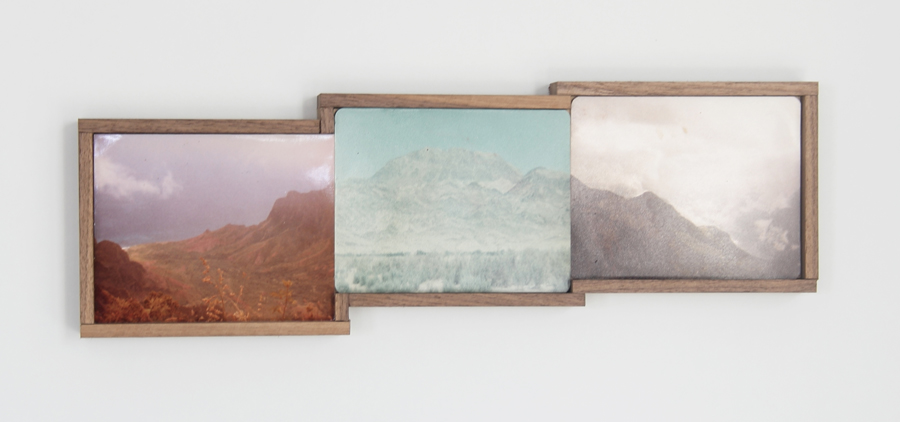
 |
||||
| cv . works . contact . news . tumblr . | ||||
| sculpture . photography . installations . paintings . music . video . other . exhibitions | ||||
| Fiction Landscapes | ||||
 |
||||||||||||||||||
| The Fiction Landscapes are a continuation in my interest in memories, both secure and lost within objects, which I first addressed with my Heirlooms body of work in 2012. The Fiction Landscapes are made with banal photographs of landscapes I purchase at flea markets then arranging them into new landscapes by aligning in such a way that the scene continues from photo to photo spanning wide geographic locations and decades.
I feel that with a photograph that is lacking a focal point such as a family member or specific location IE: the destination of the trip, then the photo is something of a placeholder for what was happening in the photographers life at that moment. For instance that point and shoot photo of a hill side on a road trip, which we have all taken at some point, will call back the trip as a whole and memories of the trip or that time in your life that are completely unassociated with the uninteresting and un related hillside that happened to fly past you as you rode in the car or stopped at a rest stop. Once these photos with no discernable direction have found themselves in a bin at the flea market these ambiguous photographs and their secret associations with memories are lost forever. Arranging these into new landscapes that never existed speaks to the stitching together of human behavior and how we relate to time and the past: How many people have stopped at that rest stop and taken nearly the same photo of the plain hillside? All locking their own associations into the view, first road trip with a new love; last road trip to see grandma; one of many road trips alone. The visual of how well the lands meet and continue also creates a dialog about how the land beneath our feet is connected to the land beneath our loved ones feet possibly thousands of miles away. Further more it can be argued that all of the land is connected beneath all of our feet spanning continents and beyond where the divisions are not humanly perceivable. One constant line drawn below us around the globe and back to us, with a center meeting point just under our shoes in which ever direction you choose to face. Choosing photographs that create a perfect line from one to the next while allowing the colors and contrasts to not play a part in my decision results often times dramatic changes visually in both exposure and color tones but allows the passage of time to be often times instantly recognizable from the 1970s to the 1980s to the present. With the black and white versions the time shifts are fare less apparent and act more as documents of the past than the color pieces. While we tend to identify black and white photos as “the past” with detailed edges that belong to a specific time period (speaking from the view of my generation) the color ones resonate more out of “our past”.
|
||||||||||||||||||
|
||||||||||||||||||